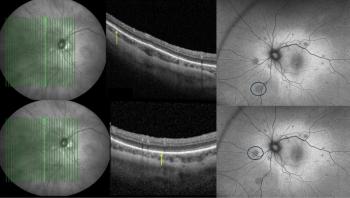
Cataracts may be caused by crystallin interactions in lens
Cataractogenesis may be the result of the interaction of crystallin-derived peptides with intact crystallins in the lens, according to a study published in the March 2008 issue of the Journal of Biological Chemistry.
Cataractogenesis may be the result of the interaction of crystallin-derived peptides with intact crystallins in the lens, according to a study published in the March 2008 issue of the Journal of Biological Chemistry.
Professor K. Krishna Sharma of the University of Missouri, US and colleagues used mass spectroscopy to identify 23 low molecular mass (<3.5 kDa) peptides in the urea-soluble fractions of young, aged, and aged cataract human lenses. The team synthesized two peptides found in the aged and aged cataract lenses, and one peptide found in all three, to study their interactions with intact crystallins and alcohol dehydrogenase.
The researchers discovered that, subsequent to interaction with intact crystallin subunits were less able to function as molecular chaperones, and that the presence of these peptides in place of hydrophobic residues eliminated their ability to induce crystalline aggregation and light scattering.
Thus the researchers concluded that cataracts may be caused by the increased amount of peptides in aged lenses interacting with intact crystallins and reducing chaperoning activity.
Newsletter
Get the essential updates shaping the future of pharma manufacturing and compliance—subscribe today to Pharmaceutical Technology and never miss a breakthrough.













































